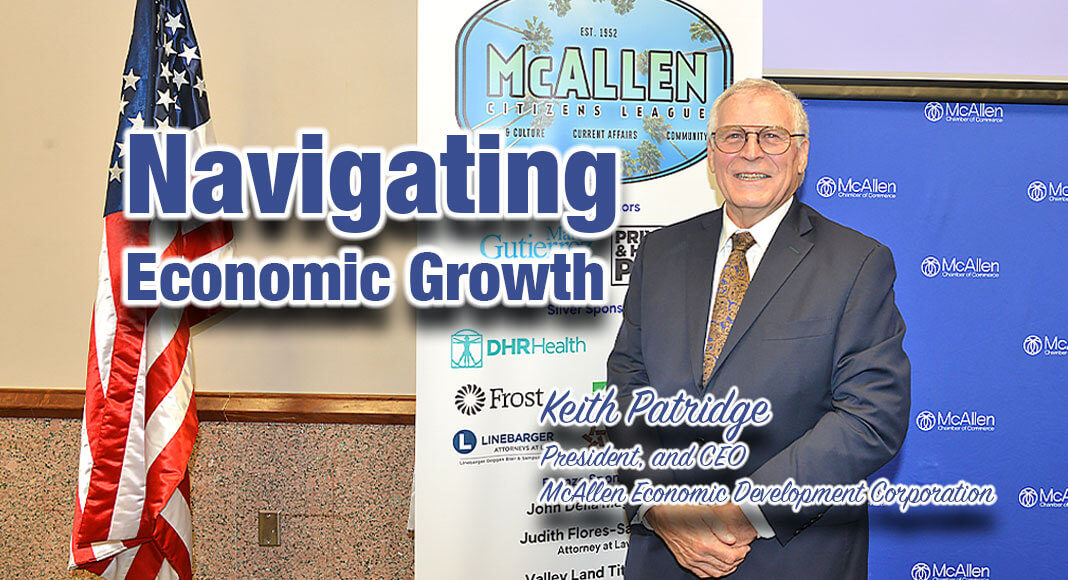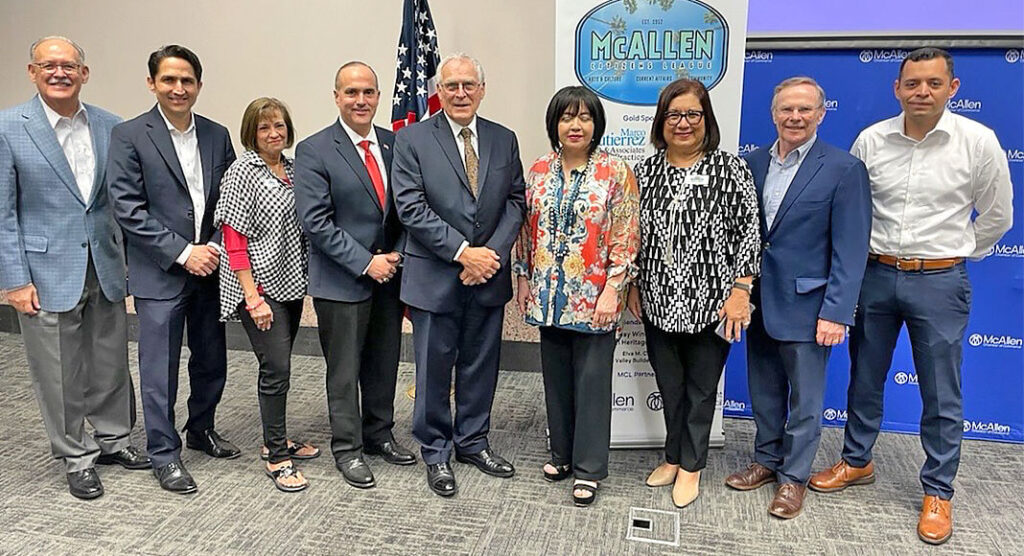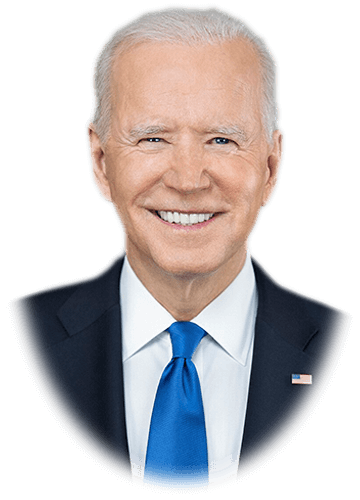
Texas Border Business
By Roberto Hugo Gonzalez
The McAllen Citizen’s League, known for its frequent engagement with community leaders, recently welcomed Keith Patridge, President, and CEO of the McAllen Economic Development Corporation (MEDC). With a track record spanning 35 years at MEDC and the McAllen Foreign Trade Zone, Patridge’s substantial experience has placed him at the forefront of binational economic development in the area.
Patridge’s rich background includes assisting companies with their binational startup operations in McAllen and Reynosa, Mexico. His work spans diverse industries and regions, facilitating strategic growth for companies in a highly competitive global market. Owing to his strong working relationships with Mexican officials and business leaders in Reynosa and the state of Tamaulipas, Patridge has been instrumental in attracting new investments and jobs, enhancing infrastructure, and promoting workforce development through education and training initiatives.

“I’m always delighted to engage with the McAllen Citizens League. We ensure to keep meticulous records on our partners and follow up each visit. Our progress is regularly reported to the McAllen EDC board,” said Patridge.
Currently, Patridge and his team are working with 29 companies, embarking on an 18 to 24-month journey from initial meetings to securing commitments. This period involves considerable deliberation as companies make multi-million or even multi-billion-dollar decisions on locating their operations.
Interestingly, of the 29 companies currently engaged, 24 are focused on the U.S. side of the border. This marks a significant shift from pre-pandemic trends when most interest was centered on the Reynosa side. Several factors contributed to this shift, including the introduction of legislative measures like the CHIPS Act and the Inflation Reduction Act, which mandate manufacturing within the United States. Furthermore, the USMCA (United States, Mexico, Canada Agreement) introduces specific content requirements, often requiring major vehicle components to be manufactured within the three-country bloc.
For instance, under new regulations, certain raw materials like aluminum and steel must be sourced from the United States. As a result of such mandates, many green energy companies are considering this region as a viable manufacturing hub.
“If we are successful with these 24 companies, it would involve about 3 million square feet of space, create 3,081 jobs, and represent a capital investment of approximately $1.8 billion,” said Patridge. He recognized the challenge of securing commitments from all partners, referring to it as the ‘secret sauce’ of their operation.
Of the remaining companies, three are U.S. and Mexico companies, signifying a resurgence of the twin plant concept initiated by the Maquiladoras. This trend is being driven by reshoring efforts, with companies looking to return from China and other overseas locations.
According to Patridge, the influence of the USMCA (United States-Mexico-Canada Agreement) has undeniably transformed manufacturing practices within our region. However, one aspect that has taken center stage, particularly due to the COVID-19 pandemic, is the advancement of automation, robotics, and artificial intelligence (AI).
These technological developments have already begun to significantly impact production lines. “AI is here, folks,” Patridge emphasized, indicating that the pandemic has accelerated the implementation of automation, robotics, and AI within many plants.
Patridge pointed out that in pre-pandemic times, manufacturing plants would have assembly lines with employees working side-by-side, passing parts down the line until a finished product was assembled. However, the outbreak of COVID-19 and the subsequent requirement of a six-foot separation between individuals forced companies to rethink their operational strategies.
To ensure the continuation of production, many companies started incorporating robots and cobots (collaborative robots with sensors) into their assembly lines. “We have one company over here, and I can’t mention the name of it, that went from zero to 600 robots in literally 60 days,” he disclosed.
Patridge clarifies that not every company has taken this approach, but a significant number have started utilizing robotics in their manufacturing processes. Robots offer several benefits: they don’t require food or rest, they don’t get sick, and their consistent operation can boost productivity. Yet, as Patridge noted, this shift has broader implications.
Many companies were initially drawn to Mexico due to its low labor costs. However, as companies replace human labor with robotic counterparts, labor costs become less of a concern. This trend, along with the higher utility costs in Mexico and occasional issues with the availability of electricity, is causing some companies to reconsider their manufacturing locations. Moreover, ongoing security concerns in Mexico are another factor prompting this reevaluation.
The good news is as Patridge said, companies are now contemplating setting up plastic injection molding operations on the U.S. side of the border, capitalizing on the twin plant concept – setting up operations on both sides of the border. This has an additional advantage under USMCA regulations. Many products can use foreign components, but if part of the production happens on the Mexican side, these components lose their foreign identity. When integrated into a finished product on the U.S. side, they qualify under USMCA, and the finished product also qualifies under Mexico’s free trade agreements with about 47 other countries.
This flexibility is particularly beneficial in sectors like the automotive, where manufacturers can fulfill production requirements for different regions and take advantage of various free trade agreements. It offers the opportunity to produce components in Mexico for export to Europe, South America, and Asia, thereby leveraging Mexico’s free trade agreements with these regions. Conversely, components intended for the North American market can be produced in the U.S. to qualify under NAFTA.
Patridge said, “What we’re witnessing is a gradual transformation influenced by USMCA, automation, and a range of other factors. As these changes continue to unfold, we anticipate a dynamic shift in how manufacturing is approached in our binational region. This evolution provides an opportunity to redefine our economic landscape while ensuring sustainable growth and resilience.”
Patridge is leading the charge to make McAllen a hub for various industries and announced that the city of McAllen is nearing the announcement of a high-tech company moving into the region. This follows a successful year of industrial recruitment that saw 12 new companies, absorbing 572,000 square feet of space, and creating 600 new jobs in McAllen, despite lingering COVID-19-related challenges.
Patridge revealed the target sectors include cold storage warehousing, film industry, medical apparel, food packaging, advanced manufacturing, green energy logistics, recycling, warehouse distribution, and automotive.
The same momentum extends to Reynosa, where, under the radar, 16 new companies have occupied over three million square feet, anticipated to create between 6,000 to 10,000 additional jobs. Reynosa currently has over 160,000 employees working across various sectors, producing everything from semiconductors to automotive components, parts for autonomous vehicles, parts for SpaceX, and television sets.
Patridge expressed excitement about two impending projects that would occupy around 200 acres of land, adding 1.5 million square feet of space, and creating approximately 2,500 to 3,000 jobs. Both projects are technology-based, with one already seeking zoning approvals, and the other working with Austin to secure incentives.
The incentive under discussion is related to a defunct program, known as the 3-13, which allowed local school districts to defer a portion of their budget in exchange for a company setting up within their district. The state reimbursed the districts for the loss incurred. With this program ending in December last year, the focus is now on House Bill 5, which will potentially attract larger manufacturing companies.
The new company on the horizon is a cutting-edge firm, set to become the largest and only commercial manufacturer of its product outside of China. This move, supported by the local government, will further boost McAllen’s industrial capacity.
However, Patridge highlighted a key challenge, there are no available buildings. He explained, in Reynosa, the vacancy rate is less than 1%, while in McAllen’s metro area, the vacancy rate is slightly higher at 1.3%, with class A industrial-grade buildings virtually all occupied at a 0.08% vacancy rate. This puts pressure on the cities to meet the current market demand of 2.6 million square feet in McAllen, a deficit of 2.1 million square feet.
Despite these challenges, the regional industrial surge shows no sign of slowing. Even with potential hurdles such as government issues, financial concerns, violence, political issues, threats of war, and international issues, McAllen and Reynosa continue to thrive as emerging industrial powerhouses. Patridge encourages anyone with investment capital to consider supporting the development of new industrial buildings, as demand clearly outstrips supply.
Patridge said that the demand is increasing. He mentioned that his MEDC team got five new companies this month. MEDC continues to work with the companies looking at this area as a place to locate, but to ensure the continuation of the momentum, he said, “We need your help to focus on what we need to do to support them with the infrastructure and education for workforce training.”
In addition, he said, “I’ve been talking about jobs that STC has anticipated already in automation, robotics, and artificial intelligence. But in the new company we’re working with, those skills don’t exist, and so, they will have to be trained.”
He also said that the community’s support is needed because these projects cost money. “It is also very key, that we maintain those things that make McAllen a desirable place to live. The welcoming, that feeling of home for companies and managers that come in is extremely critical.
He said that one of the companies that he mentioned is already sending people to look at moving here. They’re coming from the east coast. He said that for the newcomers, two things were critical, education, and then what’s the community like as a place to live.
He pointed out that one of them was a general manager that will run the plant.
In addition, he said that the last group that came in was a young family, probably in their mid-thirties. His wife is an attorney and coming from Boston and they came in and they have three little girls, seven, five, and two. Well, guess what the most important thing to them was. Education. Education. For this, Patridge said he called the McAllen ISD superintendent, and he personally took them around the city.
Keith Patridge’s leadership and strategic insights into binational operations are proving instrumental in leading McAllen and Reynosa toward a vibrant economic future. As the world rebounds from the pandemic, the MEDC’s endeavors remain crucial in fostering sustainable growth and resilience in the region.
Written by Roberto Hugo Gonzalez the 2009 SBA Journalist of the Year Award Winner & The 2009 and 2012 Paul Harris Award recipient.
















